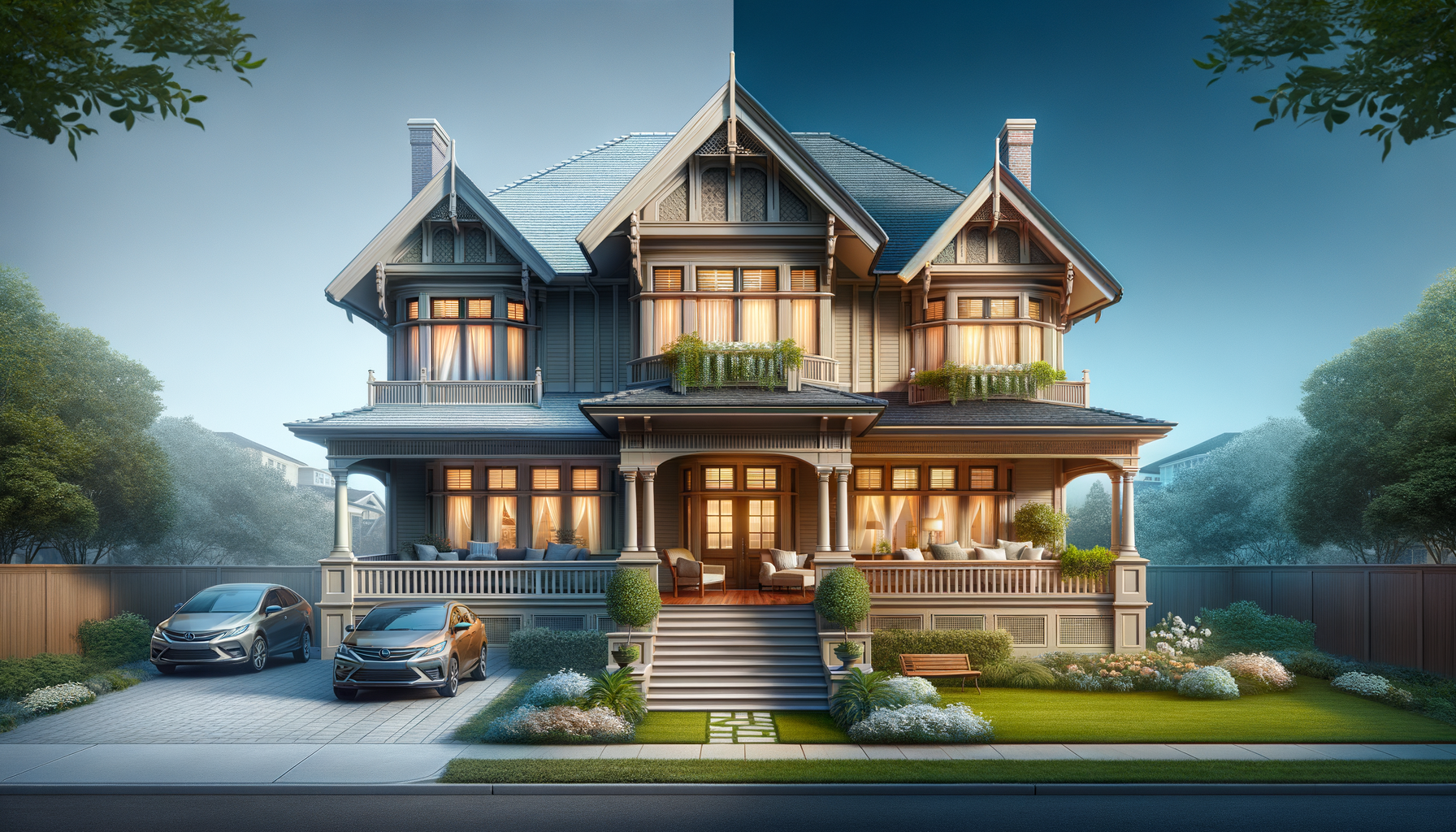
Revamp Your Living Space with Remarkable Awnings and Overhangs
Introduction to Awnings and Overhangs
When it comes to enhancing the exterior of your home, awnings and overhangs offer a multitude of benefits that extend beyond aesthetics. These architectural features not only add elegance and charm but also provide practical advantages such as protection from the elements and energy efficiency. By understanding the diverse types and materials available, homeowners can make informed decisions that align with their specific needs and style preferences. In this article, we explore the transformative potential of awnings and overhangs, offering insights into their design, functionality, and installation considerations.
Types of Awnings and Overhangs
Awnings and overhangs come in various styles, each offering unique benefits and aesthetic appeal. Among the most popular choices are retractable awnings, which provide flexibility and control over sun exposure. These can be manually or automatically operated, making them a convenient option for many homeowners. Fixed awnings, on the other hand, are permanent structures that offer continuous protection and are often used to cover windows and doorways.
Another option is the freestanding awning, which is not attached to the home but instead supported by its own frame. This type is ideal for creating shaded outdoor spaces such as patios or gardens. Overhangs, often constructed from the same materials as the home’s roof, provide a seamless extension of the structure and can be custom-designed to match the architectural style of the house.
When selecting an awning or overhang, consider the following:
- Material: Options include fabric, metal, wood, and polycarbonate.
- Climate: Choose materials that withstand local weather conditions.
- Maintenance: Some materials require more upkeep than others.
Understanding these types will help in choosing the right solution that complements both the functional needs and the aesthetic goals of your home.
Design and Aesthetic Considerations
Incorporating awnings and overhangs into your home’s exterior design can significantly enhance its curb appeal. These features can be tailored to reflect personal style, whether you prefer a modern, sleek look or a more traditional, rustic charm. The choice of color, material, and style should harmonize with the existing architecture to create a cohesive appearance.
For instance, fabric awnings offer a wide range of color and pattern options, allowing homeowners to express their creativity. Metal awnings, often seen in minimalist designs, provide a contemporary edge. Wooden overhangs, with their natural texture, can add warmth and character to the home’s facade.
Consider the following design elements when planning your awning or overhang:
- Color coordination with the house exterior.
- Material compatibility with the home’s design.
- Proportionality to the size and scale of the house.
By paying attention to these details, you can ensure that your awning or overhang not only serves its functional purpose but also enhances the overall aesthetic of your home.
Functional Benefits of Awnings and Overhangs
Awnings and overhangs offer several practical benefits that can improve the comfort and efficiency of your home. One of the primary advantages is their ability to provide shade, reducing direct sunlight and thus lowering indoor temperatures. This can lead to significant energy savings, as less air conditioning is required to maintain a comfortable environment.
These structures also protect your home from the elements. By shielding windows and doors from rain and snow, they help prevent water damage and extend the lifespan of your home’s exterior surfaces. Additionally, awnings and overhangs can reduce glare and UV exposure, protecting interior furnishings from fading.
Key functional benefits include:
- Energy efficiency through reduced cooling needs.
- Protection from weather-related damage.
- Enhanced outdoor living spaces by providing shelter.
These advantages make awnings and overhangs a wise investment for any homeowner looking to enhance both the functionality and beauty of their home.
Installation and Maintenance Tips
Proper installation and maintenance are crucial to maximizing the lifespan and effectiveness of awnings and overhangs. Before installation, it is essential to assess the structural integrity of the mounting surface and ensure that it can support the weight and stress of the awning or overhang.
Professional installation is often recommended to guarantee that the structure is secure and compliant with local building codes. Additionally, regular maintenance is necessary to keep awnings and overhangs in optimal condition. This may include cleaning fabric awnings to prevent mold and mildew, checking metal components for rust, and ensuring that retractable systems are functioning smoothly.
Consider these maintenance tips:
- Regularly inspect for signs of wear and tear.
- Clean surfaces to prevent dirt and grime buildup.
- Lubricate moving parts to ensure smooth operation.
By following these guidelines, homeowners can enjoy the benefits of their awnings and overhangs for many years, ensuring they remain a beautiful and functional part of their home’s exterior.

